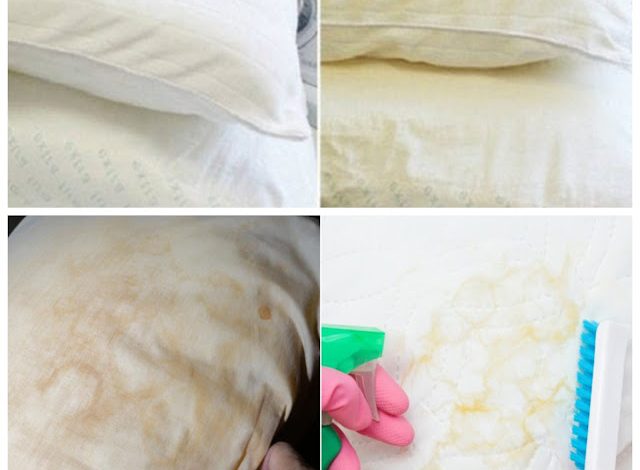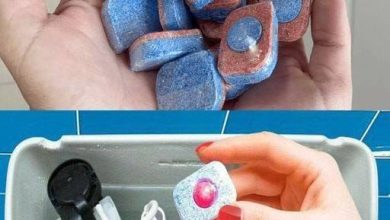HERE’S HOW TO CLEAN YOUR BED PILLOWS SO THEY STAY WHITE AND SMELL NICE

Pillows are essential for a good night’s sleep, but over time, they can accumulate dirt, sweat, and bacteria, leading to a less-than-fresh scent. This guide will provide you with practical tips on how to effectively clean your bed pillows, ensuring they stay white and smell fresh, thus contributing to a healthier sleeping environment.
ADVERTISEMENT
Step-by-Step Guide to Washing Your Pillows
ADVERTISEMENT
3.1 Preparation
ADVERTISEMENT
Before washing your pillows, check the care label for specific instructions. Remove any pillow protectors or covers and inspect the pillows for stains or damage. Pre-treat stains with a mild detergent or stain remover for best results.
3.2 Washing Process
Most pillows can be machine washed using a gentle cycle and mild detergent. Ensure the pillows are evenly distributed in the washing machine to prevent imbalance. Use warm water and an extra rinse cycle to thoroughly remove detergent residue.
3.3 Drying Techniques
After washing, carefully dry the pillows using low heat or air-dry them in direct sunlight. Adding tennis balls or dryer balls to the dryer can help fluff up the pillows and prevent clumping. Ensure the pillows are completely dry before returning them to your bed.
Tips for Maintaining Clean Pillows Between Washes
4.1 Using Pillow Protectors
Investing in pillow protectors can help shield your pillows from sweat, oils, and stains, prolonging their cleanliness between washes. Wash the protectors regularly to prevent the buildup of dirt and allergens.
4.2 Regular Fluffing and Sunning
Fluffing your pillows daily helps maintain their shape and prevents the accumulation of dust and debris. Additionally, airing out your pillows in direct sunlight can help kill bacteria and freshen them up naturally.
Addressing Specific Pillow Types
5.1 Down and Feather Pillows
Down and feather pillows require extra care during washing to prevent damage to the filling. Use a gentle detergent and low heat setting to avoid clumping and ensure thorough drying.
5.2 Memory Foam Pillows
Memory foam pillows should be spot cleaned with a mild detergent and water to avoid damaging the foam. Avoid machine washing or exposing memory foam pillows to high heat, as this can degrade the material.
5.3 Polyester Fiber Pillows
Polyester fiber pillows are typically machine washable and can withstand regular washing. Follow the care label instructions and use a gentle cycle to maintain their shape and integrity.
Ensuring Your Pillows Smell Fresh
6.1 Natural Deodorizing Methods
To keep your pillows smelling fresh, sprinkle them with baking soda before washing to neutralize odors. Lavender sachets or essential oil sprays can also add a pleasant scent to your pillows.
6.2 Scented Pillow Sprays
Commercially available pillow sprays can be used to add a refreshing fragrance to your pillows between washes. Choose a scent that promotes relaxation, such as lavender or chamomile, for a more restful sleep experience.
Additional Considerations for Allergy Sufferers
7.1 Hypoallergenic Pillow Options
For allergy sufferers, hypoallergenic pillows made from natural materials like latex or organic cotton are recommended. These pillows are resistant to dust mites and allergens, providing a healthier sleep environment.
7.2 Allergen-Reducing Washing Techniques
To minimize allergens, wash your pillows at a high temperature to kill dust mites and bacteria effectively. Use allergen-reducing laundry detergents and avoid using fabric softeners, which can leave behind residue that attracts allergens.




